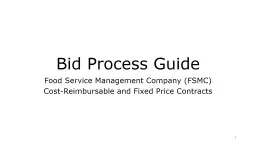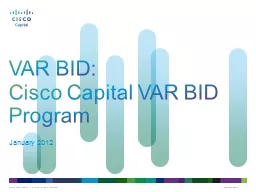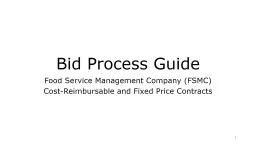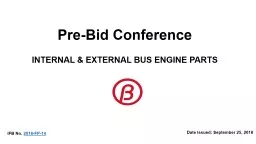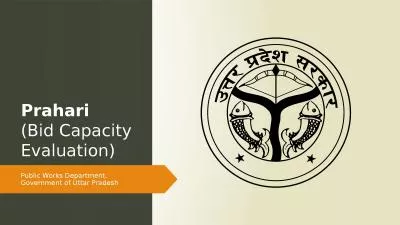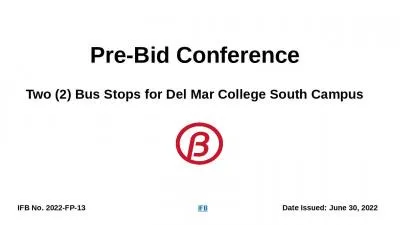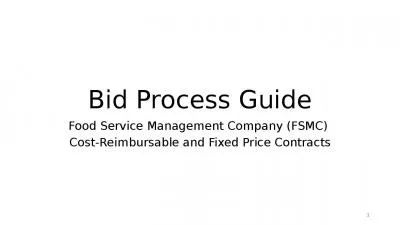PPT-Bid Process Guide Food Service Management Company (FSMC)
Author : celsa-spraggs | Published Date : 2018-03-20
CostReimbursable and Fixed Price Contracts 1 Contract Duration All contracts run from July 1 of the current year to June 30 of the following year Per Federal regulations
Presentation Embed Code
Download Presentation
Download Presentation The PPT/PDF document "Bid Process Guide Food Service Managemen..." is the property of its rightful owner. Permission is granted to download and print the materials on this website for personal, non-commercial use only, and to display it on your personal computer provided you do not modify the materials and that you retain all copyright notices contained in the materials. By downloading content from our website, you accept the terms of this agreement.
Bid Process Guide Food Service Management Company (FSMC): Transcript
Download Rules Of Document
"Bid Process Guide Food Service Management Company (FSMC)"The content belongs to its owner. You may download and print it for personal use, without modification, and keep all copyright notices. By downloading, you agree to these terms.
Related Documents

